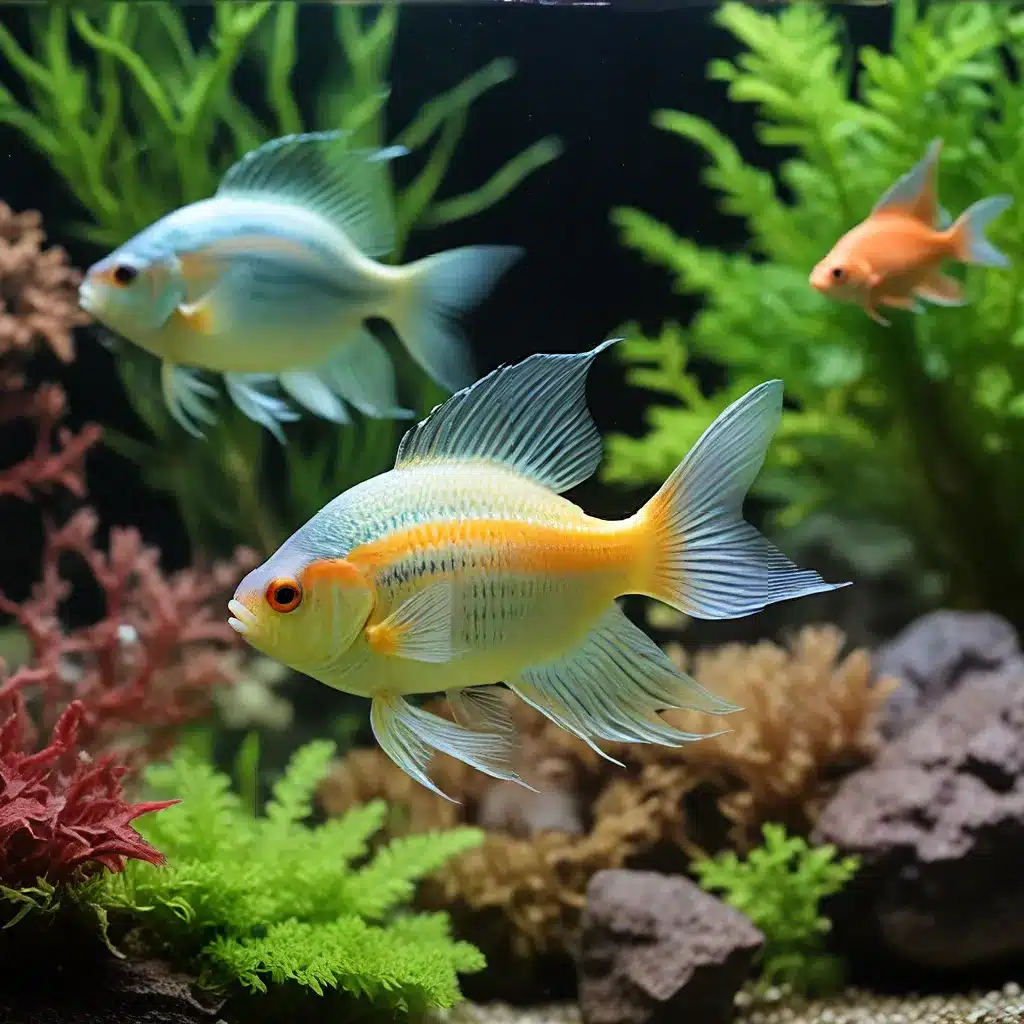
Unlocking the Secrets to Robust Aquarium Plant Growth
Maintaining a thriving aquarium is a delicate balance, with aquarium plants playing a crucial role in creating a healthy and visually striking environment for your finned companions. However, as many aquarists have experienced, achieving consistent plant growth can be a frustrating challenge. Whether you’re a seasoned enthusiast or a newcomer to the hobby, understanding the underlying factors that influence plant health and development is essential for creating a lush, vibrant aquascape.
One common issue faced by aquarium owners is the struggle to keep plants alive and thriving, as described by a member of the r/PlantedTank subreddit. Despite optimal water parameters, regular maintenance, and the use of fertilizers, some aquarists find that their plants simply refuse to grow, with some even succumbing to an untimely demise. This can be a disheartening experience, as a lack of plant growth not only detracts from the aquarium’s aesthetic appeal but can also impact the overall ecosystem’s balance.
Understanding the Fundamentals of Aquarium Plant Nutrition
At the core of successful aquarium plant growth lies a deep understanding of plant nutrition. Just like their terrestrial counterparts, aquatic plants require a delicate balance of essential nutrients to thrive. These nutrients include macronutrients such as nitrogen, phosphorus, and potassium, as well as micronutrients like iron, calcium, and magnesium.
When these nutrients are not present in the right proportions, or when they are not readily available to the plants, growth can become stunted or even cease altogether. This can lead to a range of issues, from leaves turning yellow or dropping off to an overall lack of new growth and expansion.
To address this challenge, aquarists must carefully monitor and adjust their tank’s water parameters, ensuring that the essential nutrients are present in the appropriate quantities. This may involve the use of specialized aquarium fertilizers, root tabs, or even adjusting the tank’s lighting and CO2 levels to create the optimal growing conditions.
Combating Algae Outbreaks: A Balancing Act
Another common issue faced by aquarium enthusiasts is the persistent problem of algae growth. As mentioned in the Reddit post, some aquarists have struggled to keep algae at bay, with manual and chemical removal methods proving ineffective.
Algae outbreaks can be a frustrating challenge, as they not only detract from the aquarium’s visual appeal but can also outcompete aquatic plants for essential resources, further hindering their growth. Addressing this problem requires a multi-faceted approach, focusing on maintaining a balanced ecosystem and creating conditions that favor the growth of healthy plants over algae.
One key factor in controlling algae is ensuring that the tank’s nutrient levels are properly managed. Excess nutrients, especially phosphates and nitrates, can fuel algae growth, leading to unsightly and potentially harmful blooms. Aquarists must carefully monitor and adjust their dosing regimes to maintain a delicate equilibrium, ensuring that plants have access to the nutrients they need while limiting the availability of resources for algae.
Additionally, factors such as lighting intensity and duration, water flow, and the presence of healthy populations of algae-eating fish or invertebrates can all play a role in preventing and managing algae outbreaks. By addressing these factors holistically, aquarists can create an environment that supports robust plant growth while keeping algae in check.
Exploring Aquascaping Techniques for Vibrant Plant Growth
Beyond the fundamental aspects of plant nutrition and water quality, aquascaping techniques can also have a significant impact on the overall health and appearance of aquarium plants. Skilled aquascapers have developed a range of strategies and methods to create visually stunning, thriving aquatic landscapes.
One such technique that has gained popularity in the aquarium community is the use of nutrient-rich substrates, such as the Fluval Stratum mentioned in the source information. These specialized substrates are designed to provide a rich, fertile foundation for plant roots, ensuring that they have access to the necessary nutrients for robust growth.
Additionally, the strategic placement and arrangement of aquarium plants can also play a crucial role in their development. By considering factors like light exposure, water flow, and plant compatibility, aquascapers can create layouts that optimize the growing conditions for each species, leading to a harmonious and thriving aquatic ecosystem.
Embracing the Art of Aquarium Maintenance
Maintaining a healthy and vibrant aquarium is an ongoing process that requires a commitment to regular maintenance and monitoring. This includes tasks such as:
- Performing partial water changes to replenish essential nutrients and remove waste buildup
- Pruning and trimming plants to encourage new growth and maintain the desired aquascape
- Cleaning the aquarium glass and décor to prevent algae accumulation
- Monitoring water parameters and making adjustments as needed
By dedicating time and effort to these essential maintenance tasks, aquarists can ensure that their aquatic plants receive the optimal conditions for growth and development, ultimately leading to a lush, visually stunning aquarium that showcases the beauty of the underwater world.
Conclusion: Cultivating a Thriving Aquarium Ecosystem
Achieving robust and consistent plant growth in an aquarium is a delicate balance of factors, from water chemistry and nutrient management to aquascaping techniques and diligent maintenance. By understanding the fundamental requirements of aquatic plants and applying a holistic approach to tank management, aquarists can overcome the challenges of stunted growth and algae outbreaks, creating a flourishing and vibrant underwater ecosystem that is a true delight to behold.
Remember, the key to success lies in continuous learning, experimentation, and a dedication to providing the best possible environment for your aquatic plants and fish. By embracing the art of aquarium care, you can unlock the secrets to finned flourishing and cultivate a truly captivating aquatic oasis. Happy aquascaping!

